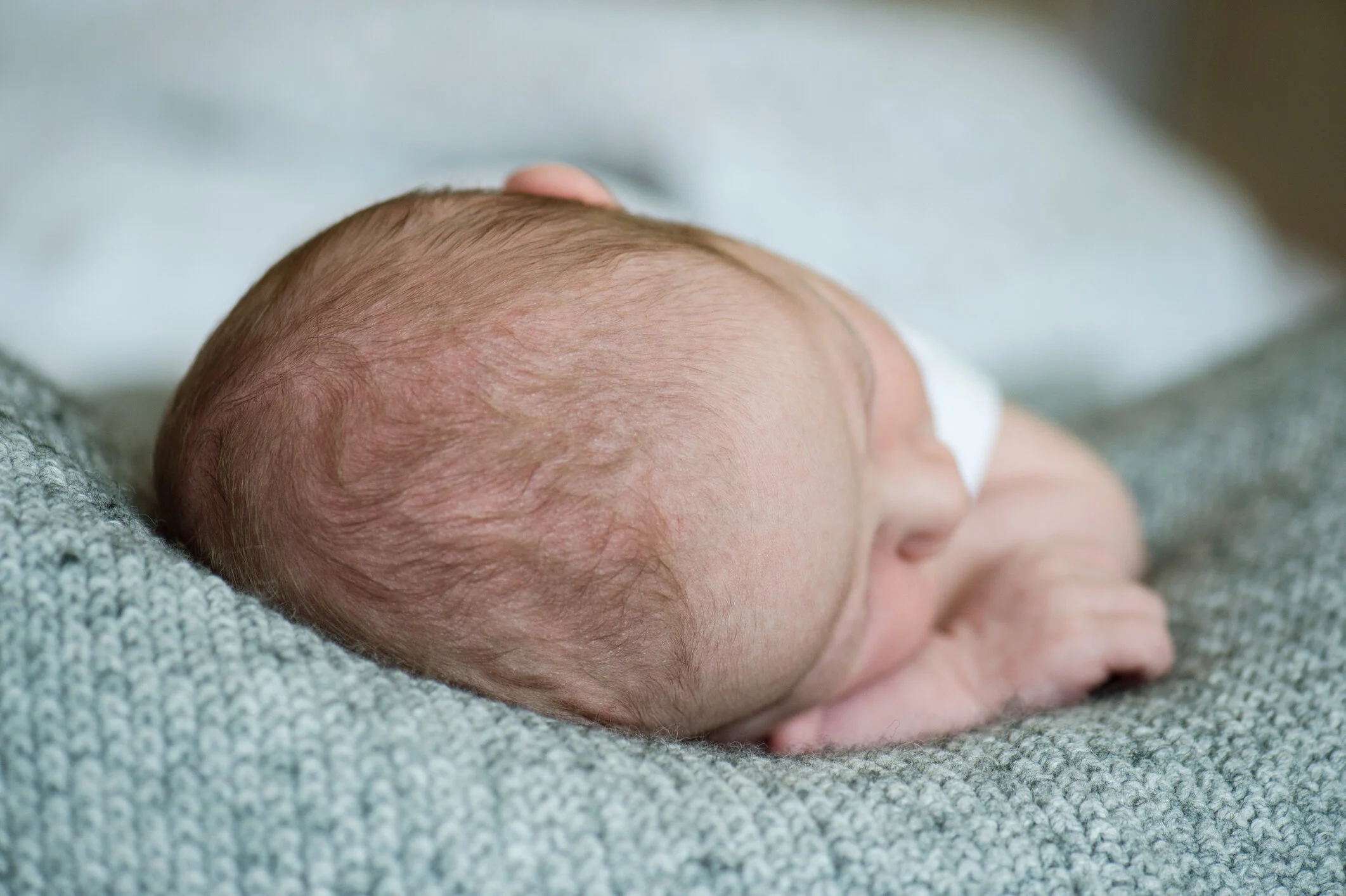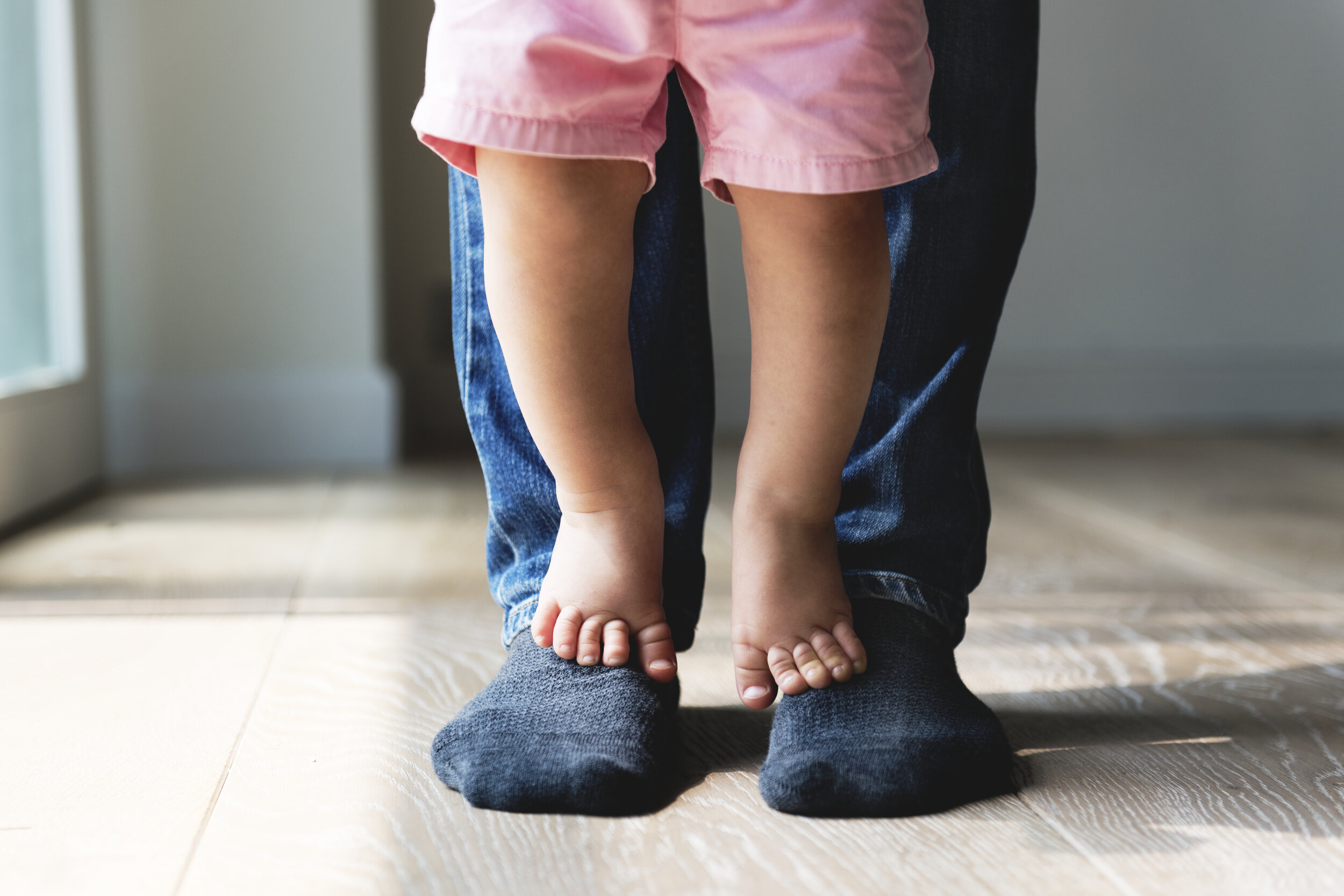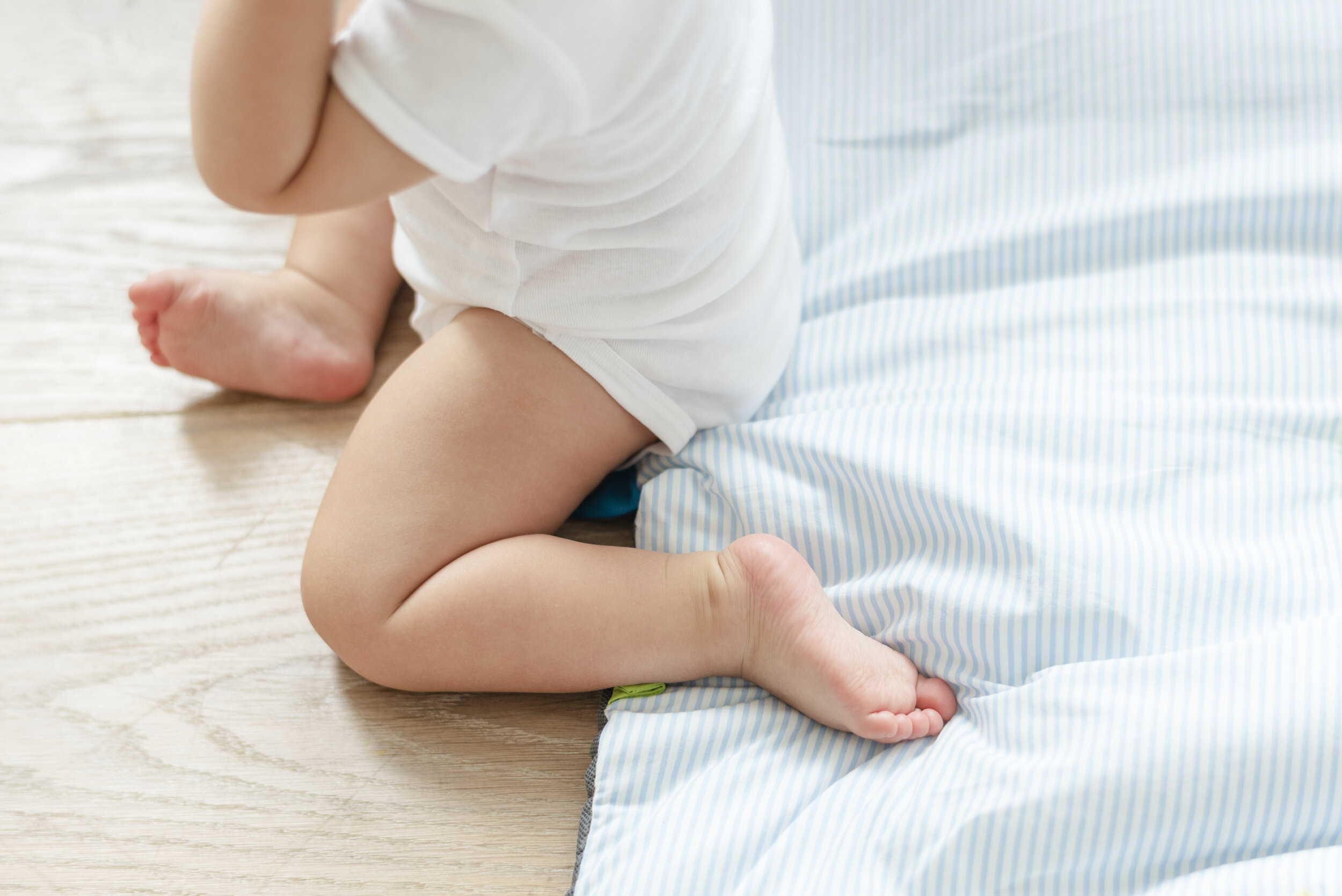Positional Plagiocephaly, commonly referred to as “infant flat head” is a condition in which a baby’s skull develops a flat spot, often on one side.
What causes plagiocephaly?
Often, plagiocephaly is the result of positioning. Babies’ skulls are very soft and easy to mold. As a result, if a baby spends too much time lying on their back or in a piece of equipment, such as a car seat, they can develop a flat spot on the back of their head (called brachycephaly). If a baby has a preference to look in one direction only, they can develop a flat spot on the same side as the preference
Torticollis (tight neck muscle) can play a role as well. If a baby has reduced range of motion, the back of the skull becomes flat on the same side the baby prefers to rotate towards.
In more severe cases, you may also see changes in the appearance of the baby’s face. The ear may shift forward, the cheek appears larger, and the eye may appear smaller on the same side as the skull fattening.
It is important to note that plagiocephaly does not impact brain development. However, a positional preference or torticollis can impact acquisition of motor skills.
Treatment for plagiocephaly often involves:
Counter-positioning exercises to address a preference and prevent continued pressure on the affected side. Back to sleep is recommended as it is safest for baby, making tummy time so important when baby is awake. Scroll a few posts back for some hints on making tummy time more enjoyable!
Stretching and strengthening of the neck muscles if torticollis is a contributing factor.
An orthotic helmet may be considered. More information on orthotic helmets for plagiocephaly coming later this week!










